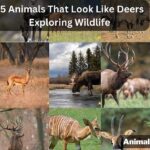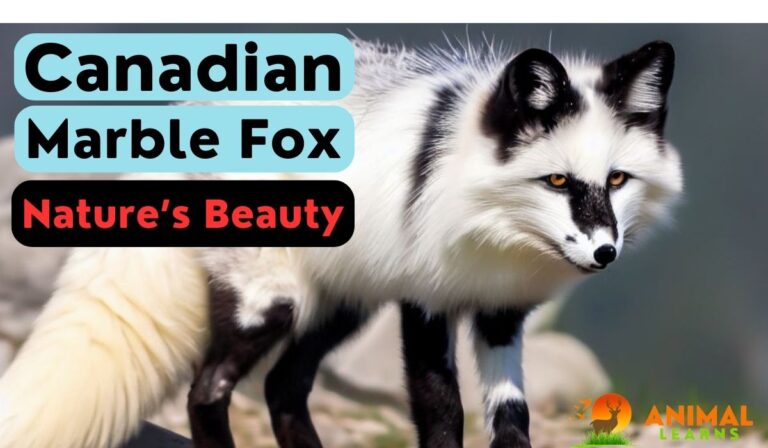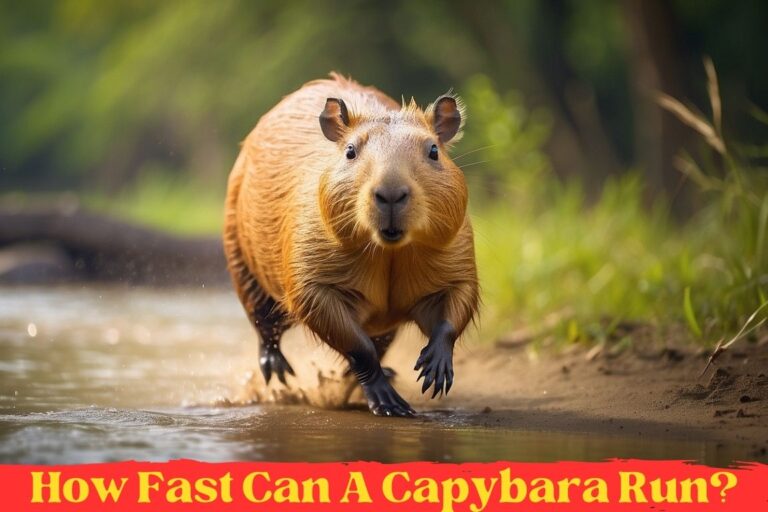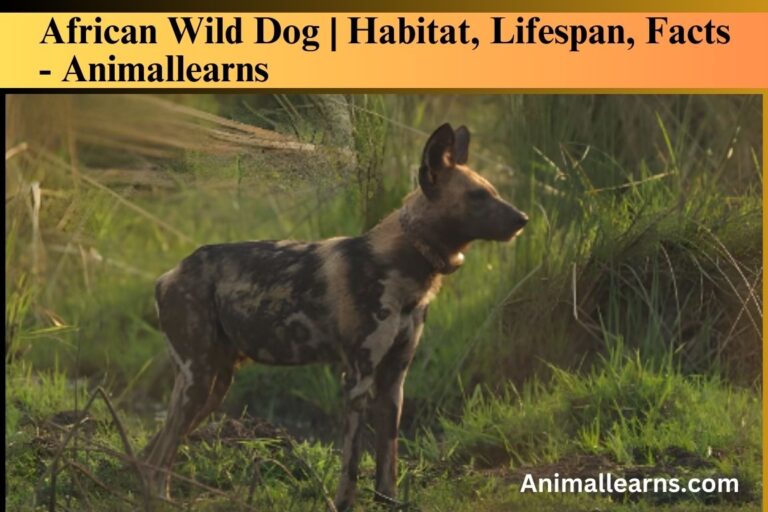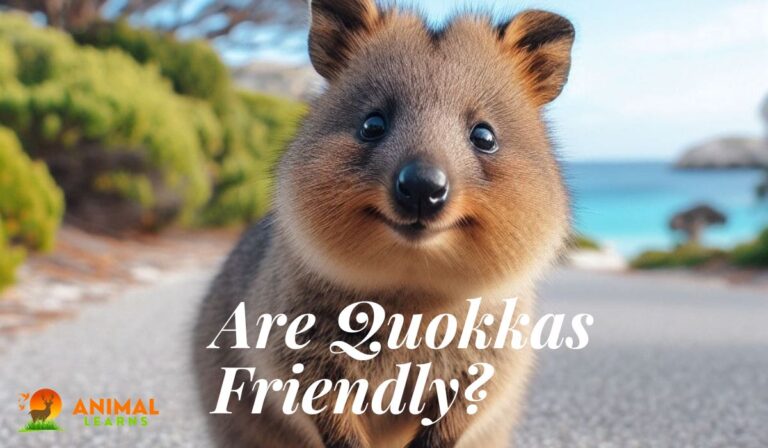Top 10 Gray Animals: Nature’s Hidden Marvels

Gray animals are often overlooked or mistaken for other colors. But they are actually very rare and special in the animal kingdom. They have adapted to some of the harshest and most diverse environments on Earth. They may not be as flashy as other animals, but they have a beauty and grace of their own.
Gray is more than just a dull color. It’s a secret weapon that helps some of the most amazing animals in the world survive and thrive. From the snowy mountains to the tropical forests, gray creatures can blend in with their surroundings, avoid predators, and hunt for prey. But don’t be fooled by their modest appearance. These animals have fascinating stories to tell, full of mystery and wonder.
In this article, you’ll discover the top 10 gray wild animals worldwide. You’ll learn about their unique features, behaviors, and habitats.
Fascinating Variety of Gray Animals
Contents
From the majestic Gray Wolf prowling the northern forests to the agile Gray Squirrel darting among treetops, the animal kingdom boasts a captivating array of gray creatures. On a larger scale, we encounter the striking Gray Whale, a gentle giant of the oceans, and the elusive Gray Woolly Monkey, found deep in the South American rainforests.
Even the smaller inhabitants, such as the charming Gray Mouse Lemur and the vocal Gray Gibbon, add their unique charm to the world of wildlife. Whether they’re large or small, these gray animals showcase nature’s diverse palette.
Gray Animals Across Diverse Habitats
Gray animals can be found in a wide range of environments, demonstrating their adaptability. In the African savannas, the Gray Kangaroo hops across the arid landscape, while the playful Gray Seal basks on coastal rocks. Venturing into Australia, we encounter the iconic Gray Kangaroo, a symbol of the Outback.
As we delve into the magical world of Disney, we discover beloved characters inspired by real-life creatures like the Gray Fox. Whether they inhabit the sea or the land, these gray animals enchant us with their presence in various ecosystems around the world.
List of Gray Animals (With Pictures)
| Number | Animal Name |
| 1 | Gray Wolf |
| 2 | Gray Squirrel |
| 3 | Gray Fox |
| 4 | Gray Whale |
| 5 | Gray Mouse Lemur |
| 6 | Gray Gibbon |
| 7 | Gray Kangaroo |
| 8 | Koala |
| 9 | Gray Seal |
| 10 | Gray Woolly Monkey |
Gray Wolf
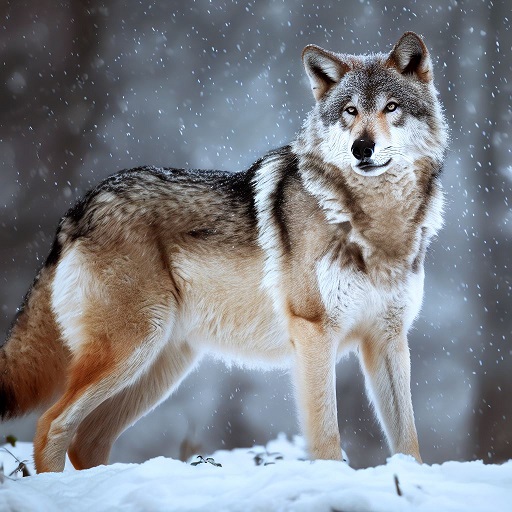
| Attribute | Information |
| Scientific Name | Canis lupus |
| Common Name | Gray Wolf, Timber Wolf |
| Family | Canidae |
| Class | Mammalia |
| Order | Carnivora |
| Habitat | Forests, Tundra, Grasslands |
| Range | North America, Europe, Asia |
| Diet | Carnivorous, primarily mammals like deer and rabbits |
| Average Lifespan | 6 to 8 years in the wild, up to 15 years in captivity |
| Size (Length) | 4.5 to 6.5 feet (1.4 to 2 meters) including tail |
| Weight | 70 to 145 pounds (32 to 66 kilograms) |
| Reproduction | Mating pairs, alpha male and female, offspring stay with the pack |
| Notable Features | Thick gray fur, expressive eyes, strong jaws |
Meet the Gray Wolf, one of the most amazing and misunderstood gray animals on Earth. This furry friend is not only smart, but also loyal, brave, and adaptable. It can live in many different places, from snowy mountains to hot deserts. It has a beautiful gray fur that can be light or dark, depending on where it lives.
The Gray Wolf is a leader in its pack, working together with its family to hunt for food and protect each other. But the Gray Wolf has also faced many challenges from humans, who have hunted it and destroyed its habitat.
Luckily, there are people who care about this wonderful animal and want to save it from extinction. The Gray Wolf is more than just a predator. It is a vital part of nature that helps keep the balance of life.
Gray Squirrel

| Attribute | Information |
| Scientific Name | Sciurus carolinensis |
| Common Name | Gray Squirrel |
| Habitat | Forests, parks, suburban areas |
| Range | North America |
| Lifespan | 6 to 12 years in the wild |
| Size | Length: 17-20 inches (including tail) |
| Weight | 1 to 1.5 pounds |
| Diet | Nuts, seeds, fruits, insects |
| Behavior | Arboreal, agile climbers, caching behavior |
| Reproduction | Mates in late winter or early spring, gestation lasts about 44 days, typically 2-4 offspring per litter |
Have you ever seen a Gray Squirrel? They are the furry balls of energy that zip around trees and gardens. They have soft gray fur that keeps them warm and cozy. They are experts at climbing and jumping, and they can even hang upside down.
They love to eat nuts and seeds, and they are very good at hiding them for later. Sometimes they forget where they put them, and they end up planting new trees by accident. How cool is that? But not everyone likes Gray Squirrels.
Some people think they are annoying because they steal bird food and chew on wires. But Gray Squirrels are just trying to survive in a changing world. They are smart and adaptable, and they have a lot to offer to nature. They are more than just cute critters. They are amazing gray animals that deserve our respect.
Gray Fox

| Characteristic | Information |
| Scientific Name | Urocyon cinereoargenteus |
| Common Name | Gray Fox |
| Family | Canidae |
| Range | North and Central America |
| Habitat | Forests, woodlands, and shrublands |
| Diet | Omnivorous (eats both plants and animals) |
| Average Lifespan | 6 to 8 years in the wild |
| Size (Length) | 76 to 112 cm (30 to 44 inches) |
| Size (Weight) | 2.7 to 6.8 kg (6 to 15 pounds) |
| Coat Color | Gray with a reddish-brown back |
| Unique Features | Grizzled appearance, black-tipped tail, and a mane-like dorsal stripe |
| Social Behavior | Primarily solitary, with limited social interactions |
If you love foxes, you’ll love the Gray Fox. This is a special kind of fox that lives in North and South America. It has beautiful gray fur with a touch of red on its neck and sides. It looks like a fluffy ball of cuteness. But don’t let its looks fool you. This fox is a master of climbing trees. Yes, you heard that right. This fox can climb trees like a cat. It does this to escape from danger, find food, or just have fun.
The Gray Fox eats all kinds of things, from mice and rabbits to berries and bugs. It can live in many places, from wild woods to cozy backyards. It usually likes to be alone, but sometimes it hangs out with its family. The Gray Fox is a rare and amazing animal that shows us how nature can be full of surprises and adaptations.
Gray Whale
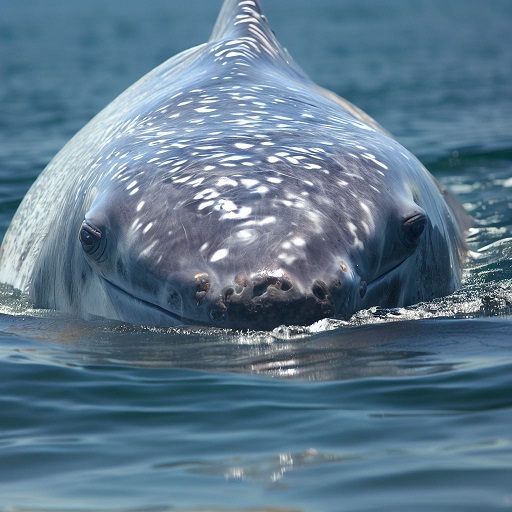
| Attribute | Information |
| Scientific Name | Eschrichtius robustus |
| Common Name | Gray Whale |
| Family | Eschrichtiidae |
| Size | Up to 49 feet (15 meters) in length |
| Weight | 30,000 to 40,000 pounds (13,600 to 18,100 kg) |
| Lifespan | Approximately 55 to 70 years |
| Habitat | Coastal waters of the North Pacific Ocean |
| Range | North Pacific Ocean, from the Bering Sea to Baja California |
| Diet | Benthic (bottom-dwelling) organisms such as amphipods and small crustaceans |
Imagine traveling across the ocean for thousands of miles every year. That’s what the Gray Whale does. This is a huge and beautiful whale that has gray skin with white spots. It looks like it has been painted by nature.
The Gray Whale is a wanderer of the seas. It swims from the cold waters of the Arctic to the warm waters of Baja California and back again. It does this to find food and have babies.
The Gray Whale’s journey is one of the most amazing sights in the world. People love to watch these whales as they pass by, spouting water and waving their tails. But these whales have not always been safe.
They were hunted by people for their oil and meat. They almost disappeared from the Earth. But thanks to people who care about them, they are now protected and their numbers are growing. The Gray Whale is a symbol of hope and wonder for the ocean and its creatures.
Gray Mouse Lemur
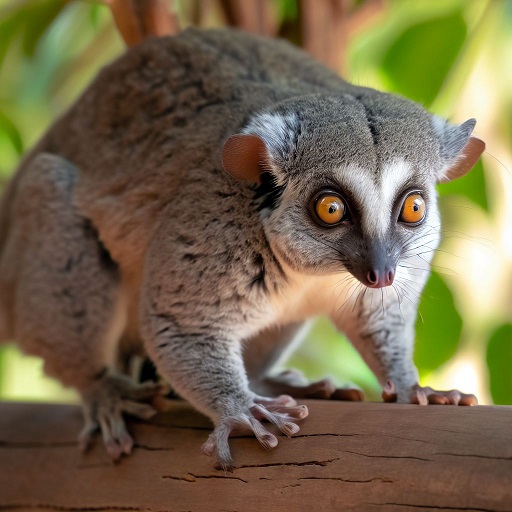
| Attribute | Information |
| Scientific Name | Microcebus murinus |
| Common Name | Gray Mouse Lemur |
| Family | Cheirogaleidae |
| Habitat | Madagascar, tropical forests |
| Size | Approximately 3.5 to 4.7 inches (9-12 cm) |
| Weight | About 1.2 to 2.1 ounces (35-60 grams) |
| Lifespan | 6-8 years in the wild |
| Diet | Primarily insectivorous, also eats fruit, nectar, and flowers |
| Activity Pattern | Nocturnal |
Have you ever seen a Gray Mouse Lemur? It’s one of the cutest gray animals in the world. It’s a tiny monkey that lives in the forests of Madagascar. It has big, round eyes and fluffy gray fur.
It looks like a stuffed toy, but it’s very much alive. The Gray Mouse Lemur is a night owl. It sleeps during the day and wakes up at night. It jumps from tree to tree, looking for yummy bugs, fruits, and flowers.
It’s so small that it can hide from bigger animals and squeeze through small spaces. But the Gray Mouse Lemur is also in danger. People are cutting down their homes and making them smaller and smaller.
We need to help save this adorable and amazing animal before it’s too late. The Gray Mouse Lemur is a treasure of nature that deserves our love and protection.
Gray Gibbon

| Attribute | Information |
| Scientific Name | Hylobates moloch |
| Common Name | Gray Gibbon |
| Family | Hylobatidae |
| Habitat | Tropical rainforests of Java, Indonesia |
| Range | Western and Central Java, Indonesia |
| Size | Approximately 44-62 centimeters (17-24 inches) |
| Weight | Around 4-6 kilograms (8.8-13.2 pounds) |
| Coloration | Gray fur with a lighter facial ring and dark hands and feet |
| Diet | Primarily frugivorous (fruit-eating) with some leaves, flowers, and insects |
| Unique Feature | Known for their hauntingly beautiful vocalizations |
| Lifespan | Up to 25-30 years in captivity |
Have you ever heard the haunting songs of the Gray Gibbon? This small ape, also known as the Silvery Gibbon or Hylobates moloch, has a silver-gray fur that makes it stand out from other gibbons.
It lives in the rainforests of Indonesia, mainly on Java and Borneo islands, where it swings from tree to tree with amazing agility. Its songs are not only beautiful but also serve as a way of communicating and marking its territory.
Unfortunately, this enchanting primate is critically endangered due to the loss of its forest home and the illegal pet trade. Its population has dropped dramatically in recent years, putting it at risk of extinction. We need to act now to save the Gray Gibbon and its rainforest habitat, as they are vital for the balance of nature.
Gray Kangaroo
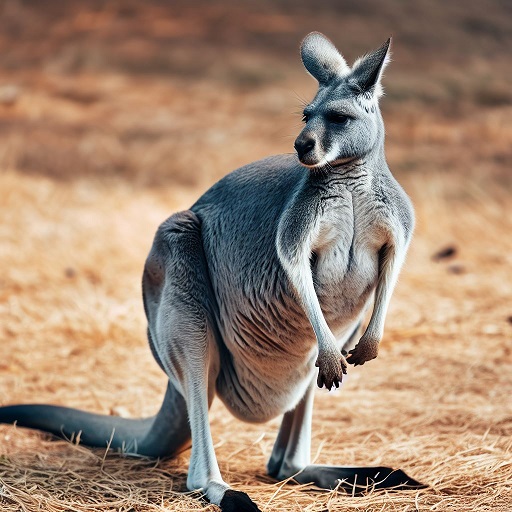
| Attribute | Information |
| Scientific Name | Macropus giganteus |
| Common Name | Gray Kangaroo |
| Family | Macropodidae |
| Habitat | Woodlands, grasslands, scrub |
| Range | Australia |
| Size | Up to 8 feet (2.5 meters) tall |
| Weight | Up to 200 pounds (90 kilograms) |
| Diet | Herbivorous (grasses, plants) |
| Lifespan | Up to 6-8 years in the wild |
| Unique Features | Strong hind legs for hopping; Males often have gray or reddish-brown fur, while females tend to be lighter in color. |
| Predators | Dingoes, large eagles, and occasionally, humans |
Imagine being a Gray Kangaroo, one of the largest and most agile marsupials in the world. You live in the wild and wonderful land of Australia, where you can hop across vast distances with your powerful legs. You have a gray coat that blends in with your surroundings, helping you avoid predators and stay cool in the heat.
You are a mother kangaroo, and you have a special pouch where you keep your baby, called a joey until it is ready to explore the world on its own. You are a symbol of Australia’s unique and amazing wildlife, and you inspire awe and admiration in anyone who sees you. You are a Gray Kangaroo, and you are awesome.
Gray Koala
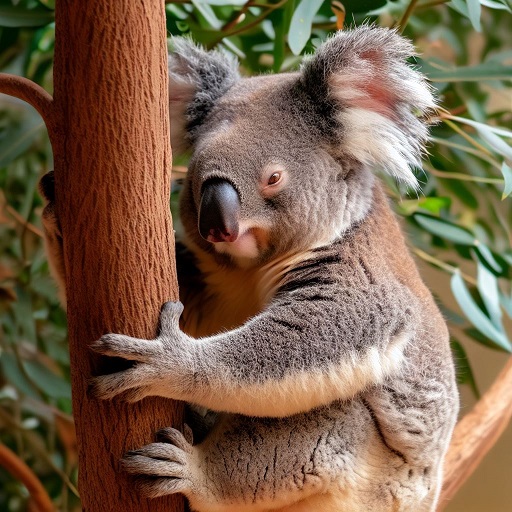
| Attribute | Information |
| Scientific Name | Phascolarctos cinereus |
| Common Name | Koala |
| Type | Marsupial |
| Habitat | Eucalyptus forests of Australia |
| Range | Eastern and southern Australia |
| Diet | Eucalyptus leaves |
| Lifespan | 10-15 years (in the wild) |
| Size | 24-33 inches (61-84 cm) in length |
| Weight | 9-33 pounds (4-15 kg) |
| Conservation Status | Vulnerable |
| Unique Feature | Specialized diet, marsupial pouch, and iconic fluffy appearance |
Meet the Gray Koala, a cuddly marsupial that lives in the forests of Australia. You might think it’s a bear, but it’s actually more closely related to kangaroos and wombats.
It has a thick, soft fur that can be silver-gray or brownish-gray, depending on where it lives. It keeps it warm in the winter and cool in the summer. It loves to eat eucalyptus leaves, which give it a nice smell and make it sleepy.
It spends most of its time in the trees, snoozing and snuggling. But don’t be fooled by its cuteness. The Gray Koala is in danger of losing its home and its food due to deforestation and climate change. We need to help save this adorable animal and its forest habitat, as they are part of Australia’s rich and diverse wildlife.
Gray Seal

| Attribute | Information |
| Scientific Name | Halichoerus grypus |
| Common Name | Gray Seal |
| Family | Phocidae |
| Order | Carnivora |
| Habitat | Coastal waters, beaches, rocky shorelines |
| Range | North Atlantic Ocean, Baltic Sea, and adjacent areas |
| Diet | Fish, squid, crustaceans |
| Size | Adult males: 7-11 feet (2.2-3.3 meters) in length and 770-880 pounds (350-400 kilograms) in weight; Adult females: 6-7 feet (1.8-2.1 meters) in length and 330-550 pounds (150-250 kilograms) in weight |
| Lifespan | Typically 25-35 years in the wild |
| Behavior | Solitary, but may form colonies during breeding season |
| Reproduction | Give birth to a single pup every 1-2 years; Pups are born on land or ice and are nursed for about 3-4 weeks |
| Predators | Sharks, killer whales, and occasionally polar bears |
| Interesting Fact | Known for their distinctive “banana-like” call |
Have you ever seen a Gray Seal? These are amazing gray animals that live in the North Atlantic Ocean. They have grayish-brown fur and big, beautiful eyes that make them look very cute. They are very social and live in large groups called colonies.
In the winter, they go to the beaches to have their babies, called pups. The mothers take good care of their pups and feed them with their rich milk. As they grow up, they learn to swim and hunt for fish and squid. They are very fast and agile in the water.
Gray Seals have had a hard time in the past, but thanks to conservation efforts, they are doing much better now. They are a wonderful example of the marine life that we need to protect and cherish.
Gray Woolly Monkey

| Attribute | Information |
| Scientific Name | Lagothrix cana |
| Common Name | Gray Woolly Monkey |
| Family | Atelidae |
| Habitat | Rainforests of South America |
| Range | Brazil, Peru, Colombia |
| Conservation Status | Vulnerable (IUCN Red List) |
| Size | Medium-sized primates |
| Fur Color | Gray |
| Diet | Primarily frugivorous |
| Behavior | Arboreal, social, and vocal |
| Special Features | Prehensile tail, expressive |
| facial features |
Let me introduce you to the Gray Woolly Monkey, a furry and fascinating primate that lives in the rainforests of South America. You can find them in countries like Brazil, Peru, and Colombia, where they enjoy the rich and diverse fruits of the forest.
They have thick, grayish fur that keeps them warm and cozy in the wet and chilly weather. They also have amazing faces, eyes, and tails that help them communicate and move around in the trees.
They are very social and love to hang out with their family members, where they chat and groom each other. But these wonderful monkeys are in trouble. Their forest home is being destroyed and they are being hunted for their meat and fur. We need to help save these incredible and endangered animals before it’s too late.
Conclusion
There are many amazing animals that are gray in color. They are diverse, adaptable, and wonderful. Let me tell you about some of them. Gray animals are often overlooked in favor of their more colorful counterparts, but they have a beauty and importance of their own. Their muted hues are not a flaw, but a feature, giving them an edge in survival and adaptation.
Whether it’s the majestic Gray Wolf with its loyal pack or the adorable Gray Woolly Monkey with its expressive face, these animals are vital for the health and diversity of their ecosystems. Gray is not a boring color, but a sign of nature’s creativity and complexity.
These gray animals have amazing stories to tell us about life on Earth, and we should appreciate, respect, and protect them. They are part of the rich and intricate tapestry of our planet’s wildlife, and they deserve our attention and care.
FAQs
What is the primary function of gray coloration in many animals?
Camouflage and protection.
Where can you find Gray Wolves in the wild?
North America, Europe, Asia, and parts of Africa.
What is the typical diet of Gray Squirrels?
Nuts, seeds, fruits, and occasionally insects.
Which continent is the native habitat of Gray Woolly Monkeys?
South America.
Why are gray animals often important for ecosystem health?
They can help with seed dispersal and contribute to ecological balance.





